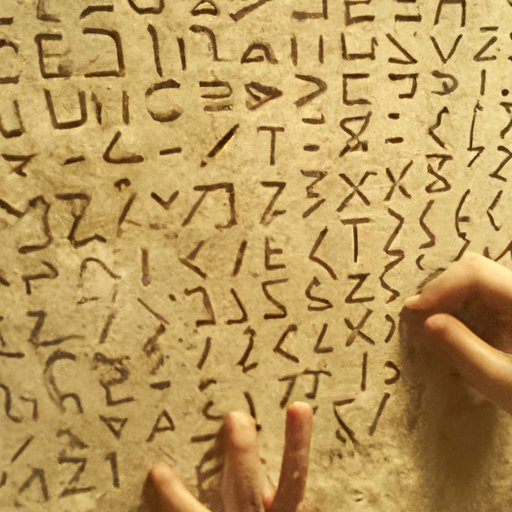Introduction
The development of writing is an integral part of human history. From its earliest beginnings, writing has helped shape our world and our lives. In this article, we will explore when humans started writing and investigate the impact of writing on human civilization.
Historical Overview of the Development of Writing
It is believed that the first form of written communication appeared around 3200 BC in Mesopotamia (present-day Iraq). This early writing system was called cuneiform and was used by the Sumerians to record information. Over time, other ancient civilizations developed their own writing systems, such as hieroglyphics in Egypt and Chinese characters in China. The spread of these different writing systems throughout the world led to increased communication and collaboration between cultures.

Investigating the Earliest Forms of Written Language
The earliest forms of written language were pictographic – they consisted of pictures or symbols designed to represent objects or ideas. These symbols evolved over time into more abstract forms that could be used to communicate complex concepts. As writing became more sophisticated, it began to be used for a variety of purposes, including recording laws, documenting histories, and expressing religious beliefs.

Examining Ancient Writing Systems and Their Influence
Sumerian cuneiform, which first appeared in Mesopotamia around 3200 BC, was one of the earliest writing systems. It was primarily used for administrative purposes and to record commercial transactions. Cuneiform was written on clay tablets and divided into syllables, making it easy to learn and use.
Egyptian hieroglyphics were another early writing system. They emerged around 3000 BC and were used to record the beliefs and customs of the ancient Egyptians. Hieroglyphics were written on papyrus scrolls and carved into stone monuments. While the symbols had multiple meanings, they could also be combined to create complex sentences.
Chinese characters, which first appeared in China around 1200 BC, are still used today. They are composed of simple strokes and can be used to express complex thoughts and ideas. Chinese characters are also credited with helping to spread knowledge and ideas across East Asia.

The Impact of Writing on Human Civilization
Writing has had a profound impact on the course of human history. By providing a way to communicate and record information, it enabled people to collaborate and share ideas more effectively. This increased communication and collaboration helped to facilitate the spread of knowledge and ideas, leading to advances in science, technology, and culture.
Writing also allowed people to preserve their histories and traditions. It enabled them to document events, laws, and beliefs, allowing them to be passed down through generations. By preserving these records, writing has helped shape the course of human history.
Conclusion
The development of writing has been an important part of human history. Its earliest forms were pictographic symbols that evolved into systems of writing that could be used to communicate complex ideas and record information. Writing has had a profound impact on human civilization, enabling people to collaborate, share knowledge, and preserve histories and traditions. Its influence on our lives today is still evident, from the books we read to the conversations we have.
(Note: Is this article not meeting your expectations? Do you have knowledge or insights to share? Unlock new opportunities and expand your reach by joining our authors team. Click Registration to join us and share your expertise with our readers.)
